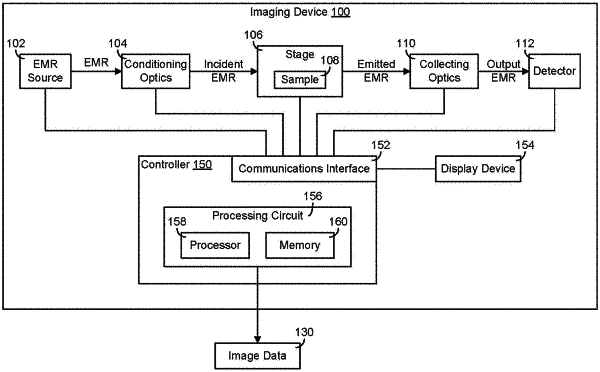| CPC G01N 33/4833 (2013.01) [G01N 21/6456 (2013.01); G01N 33/48 (2013.01); G01N 33/57492 (2013.01); G06T 7/0012 (2013.01); G16H 30/20 (2018.01); G16H 40/63 (2018.01); G16H 50/30 (2018.01); G01N 21/6428 (2013.01); G01N 2021/6439 (2013.01); G01N 2800/52 (2013.01); G06T 2207/30096 (2013.01)] | 20 Claims |

|
9. A method of determining a score representative of a spatial proximity between at least one pair of cells in a tumor tissue sample taken from a cancer patient using an imaging system, the method comprising:
executing instructions stored on a computer-readable medium, wherein the instructions include:
receiving image data based on information about detected electromagnetic radiation captured at an imaging device;
analyzing the image data to determine the score;
wherein analyzing the image data comprises:
dilating fluorescence signals attributable to a first biomarker, expressed by a first member of the at least one pair of cells, by a predetermined margin that is selected to encompass a proximally located second member of the at least one pair of cells expressing a second biomarker that is different from the first biomarker;
determining an interaction area, which is a first total area for all cells which express the second biomarker and are encompassed within the dilated fluorescence signals attributable to the first biomarker;
calculating the score by dividing the interaction area by a normalization factor and multiplying the resulting quotient by a predetermined factor to arrive at a spatial proximity score.
|